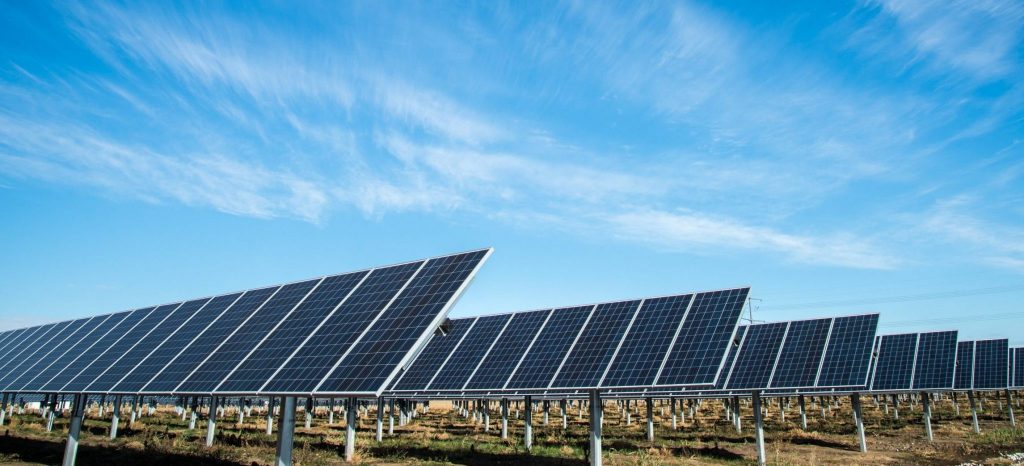Data centres are the veritable engine of any modern organization. Data being today’s biggest asset, the data centres are invaluable cogs in the wheels of progress. They take up large spaces and a lot of power. One of the major concerns revolving around data centres is the quality of power. A consistent and uninterrupted power supply is required to secure the sensitive information that is stored in data centres.
With data centres taking up a lot of power, organizations are now turning to more sustainable and cheaper alternatives. The most viable option is Solar energy. One of the prime examples is the Bharti Airtel in Uttar Pradesh. They set up a 14 MW solar power plant to power their data centres in the state. Airtel has 10 large and 120 Edge data centres spread across India. They plan to transition to at least 50% renewable energy in the financial year of 2022-2023.
India has set up around 375 MW of dedicated power infrastructure for data centres. This capacity is expected to increase threefold to meet the needs of the new data centres to be set up by 2025. About 4.9 Billion USD is being invested in this venture.
India is currently the forerunner in the green energy program in the world. As part of the Paris Agreement, we have currently achieved 175 GW of clean energy. A major chunk of is solar energy. In 2021, India has managed to install renewable energy projects with a capacity of 89.63 GW. Of this, 49.59 GW is already operational. The government is also pushing for renewable energy for the rest of the building in which the data centre is housed.
Coming back to data centres, they usually have a Plan A and Plan B power supply. Plan A would be the primary power source. Plan B would be the alternate source in times of power cuts. The set-up would call for automatic changeovers and switches for an uninterrupted power supply. The power was essential to not only run the machines but also cool the system. The backups are usually diesel gen-sets, batteries, inverters, etc.
Their power consumption is so enormous. A large chunk of the company budget goes to paying the power bill. This allocation can be even up to 10% of the total cost of operations. Smaller data centres consume a few kilowatts of power. The industrial-scale data centres can draw power in Megawatts.
In terms of environmental impact, the data centres, IT, and communication centres account for almost 2% of the global carbon emissions. Of this, 14% is emitted by data centres alone. The Baker Institute of Rice University in the UK conducted a 1.5 years study. It concluded that these emissions would triple by the end of 2020. To mitigate this impact, it is inevitable to make the shift to renewables. Solar by far is the most convenient and the only infrastructure that can be set up on a small scale.
Solar-powered data centres have the following benefits.
- Solar is very environmentally friendly. It has zero emissions in capturing light and converting it into electricity
- With solar batteries as backup, they are very stable when compared to coal-based power production
- The Data Centres can establish themselves as a clean energy centre
- Comes with initial installation costs, but pays back in reduced operational costs
The state governments are giving cross-subsidy to the data centres. This is part of the centre’s plan to get more infrastructure investment in India. Right now, the data centres are buying power at very high rates. Sometimes they manage to buy power at lower rates from a different state. In this case, they are still levied a cross-subsidy surcharge. This impedes investors as they are unwilling to bear the high operational costs associated with data centres. If the power cost were brought down, then serious players would invest in their infrastructure development.
Establishing a data centre requires about 40 clearances with various governing bodies. This is time-consuming and detrimental to progress. However, this bureaucracy is necessary to the secure establishment of data centres. Therefore, the government turned to providing relief for those that adopt clean energy. The relief is provided in the form of lower levies on electronic solar components. The guidelines are also drawn in favour of the domestic ancillary industries. This would spur the existing data centres to go green, as well as rope in new investors.
With data centres actively indulging in energy efficiency through Solar, they can even reduce day-to-day operating costs. The initial supply and installation costs would be recovered in the form of savings on the power bill. The consistent power supply gives them more flexibility and responsiveness. It makes them an active participant in the green energy transition. This kind of renewable energy adoption also keeps power rates from increasing in the future. The dependence on the national power grid is also significantly reduced








